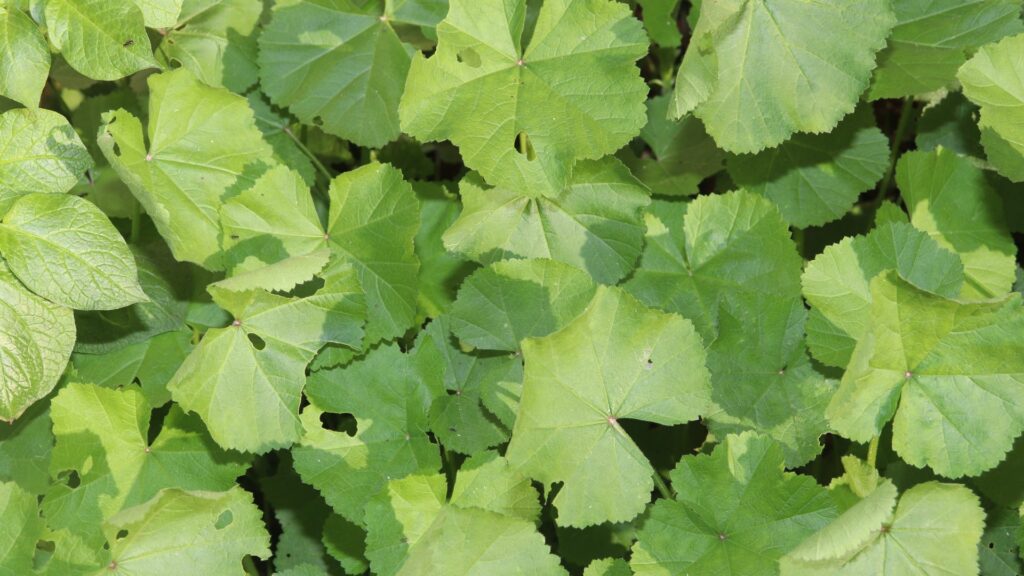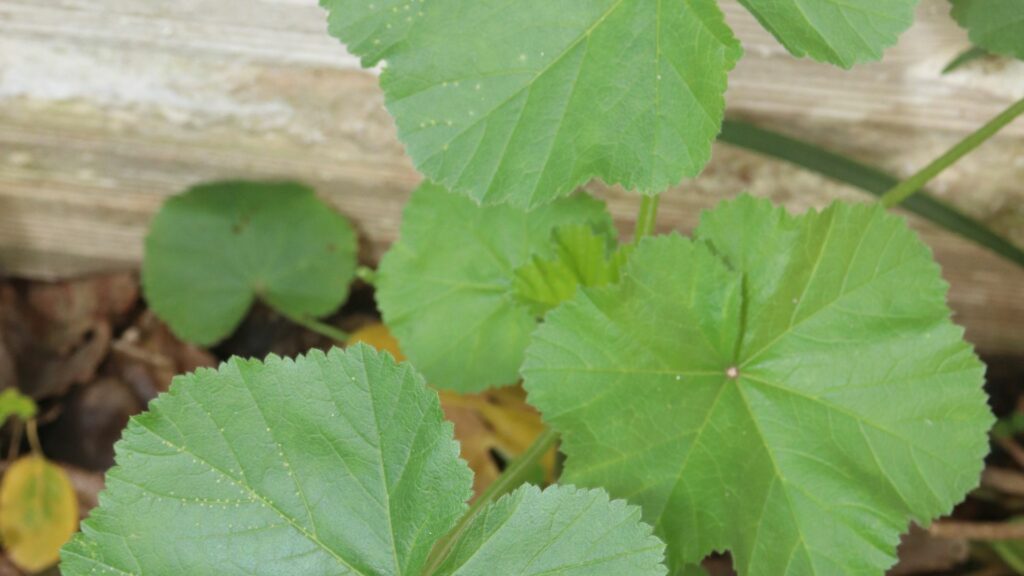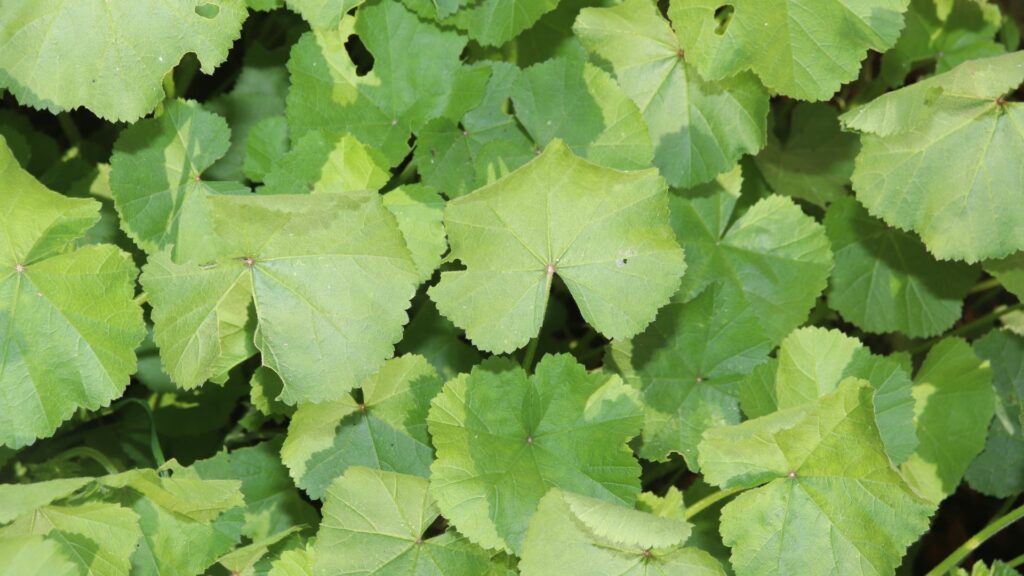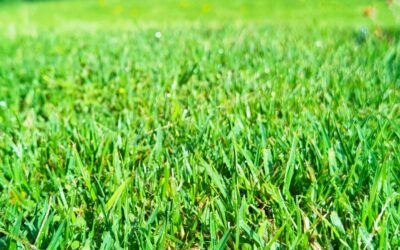Landscapers often struggle with controlling plant sizes and health. Plant Growth Regulators (PGRs) are organic compounds that modify plant growth. This article will guide you in using PGRs to solve common landscaping challenges. Read on for a landscaper's guide to...
Recent Posts
How Lawn Pest Control Enhances Overall Landscape Health
According to recent research by the University of Princeton, lawns account for over 40 million acres of American land today. Maintaining a lush, green space is more than just a matter of aesthetics; it's about creating a healthy, sustainable outdoor environment. One...
The Role of Landscape Maintenance in Enhancing Property Value
You're waiting for potential tenants to arrive at your commercial property for their first viewing. But as you stand in the sunshine, you scan your surroundings and spot a problem. That pathway is cracked. That water fountain isn't working. And when was the last time...
Mallow weed is a common problem for commercial facility and property managers, quickly taking over landscapes if not properly controlled. These pesky weeds can be identified by their round, fuzzy leaves and small pink or white flowers. In this ultimate guide, we’ll provide you with effective strategies to prevent, identify, and control mallow weed infestations on your property. By following these simple steps, you can keep your landscape looking its best and free from these unwanted invaders.
Key Takeaways
- Common Mallow, or Malva neglecta, is an invasive weed with distinctive round, fuzzy leaves and small pink or white flowers that can quickly spread and take over landscapes if not properly controlled. It thrives in moist, fertile soil and disturbed areas like gardens, roadsides, and urban lawns.
- To prevent and control Common Mallow growth, regularly scout for and remove the weed by hand, maintain a healthy dense lawn through proper mowing, watering and fertilizing, apply pre-emergent herbicides in early spring, and avoid overwatering to reduce moist soil conditions it prefers.
- Effective methods for Common Mallow Weed control include applying post-emergent systemic herbicides containing 2,4-D, dicamba or triclopyr, spot-treating small patches with non-selective herbicides like glyphosate, and hand-pulling the entire taproot of young plants before they set seed.
What is Common Mallow?

Common Mallow, scientifically known as Malva neglecta, is a flowering plant that often grows as a weed in many areas. The plant belongs to the mallow family, which includes other well-known plants such as hollyhocks and hibiscus.
Common Mallow features distinctive round, notched leaves and produces small pink or white flowers. Its unique appearance makes it easily recognizable, but it can quickly spread and take over turf areas, causing a nuisance for commercial facility managers and property managers responsible for maintaining aesthetically pleasing and weed-free landscapes.
Common locations of Common Mallow
Common mallow grows in various disturbed areas, including gardens, fields, roadsides, and waste sites. This weed thrives in moist, fertile soil, making it a frequent nuisance in cultivated landscapes and gardens.
Urban areas are not immune to common mallow infestations. Lawns and parks with regularly disturbed soil provide ideal conditions for this weed to establish itself and spread quickly.
Prevention and Scouting for Common Mallow

Regularly scout for Common Mallow in your lawn or garden to identify and prevent its growth before it spreads out of control. Read on to learn more about effective prevention and control methods for this pesky weed.
Identifying and preventing Common Mallow growth
Identifying and spotting Common Mallow early is crucial for effective control. Follow these steps to identify and prevent Common Mallow growth in your property:
- Learn to recognize Common Mallow by its distinctive round, lobed leaves and pink or white flowers. The leaves are alternate and have long petioles, while the flowers have five petals and are about 1/2 inch in diameter.
- Look for small, round seeds that resemble miniature cheese wheels. These seeds are a telltale sign of Common Mallow and can help you identify the weed even when it’s not flowering.
- Regularly inspect your property for signs of Common Mallow, particularly in areas with disturbed soil or poor drainage. Pay special attention to gardens, landscaped areas, and along sidewalks or driveways.
- Maintain a thick, healthy lawn by mowing at the proper height, fertilizing appropriately, and watering deeply but infrequently. A dense turf can help prevent Common Mallow seeds from germinating and establishing.
- Apply a pre-emergent herbicide in early spring before Common Mallow seeds germinate. This can help reduce the number of weeds that emerge during the growing season.
- Remove any Common Mallow plants you find by hand, making sure to pull out the entire taproot. This is most effective when the plants are young and haven’t yet set seed.
- Avoid overwatering and ensure proper drainage in your landscaped areas. Common Mallow thrives in moist, poorly drained soils, so reducing excess moisture can help discourage its growth.
By familiarizing yourself with Common Mallow’s appearance and taking proactive steps to maintain a healthy, weed-free property, you can significantly reduce the likelihood of a Common Mallow infestation.
Cultural and Chemical Control Methods for Mallow Weed Control
Proper lawn maintenance, such as mowing at the correct height and avoiding overwatering, can help prevent common mallow growth. Herbicides containing 2,4-D, dicamba, or triclopyr are effective in controlling common mallow when applied according to label instructions.
Maintaining a healthy lawn to prevent Common Mallow
Maintaining a healthy lawn is essential for preventing the growth of Common Mallow. Sunrise Landscape’s experts recommend regular mowing, proper watering, and balanced fertilization to promote a thick, lush lawn that can outcompete weeds like Common Mallow.
Overseeding bare spots and thinning areas can also help prevent the establishment of this invasive weed.
Sunrise Landscape’s sustainable practices and use of native plant species can further reduce the likelihood of Common Mallow infestations. Their team of arborists, certified pest control applicators, and horticulturalists can provide guidance on the best cultural practices for your specific lawn, taking into account factors such as soil type, sun exposure, and regional climate.
Use of herbicides for control
In addition to cultural practices, herbicides can be an effective tool for controlling common mallow infestations. Sunrise Landscape’s certified pest control applicators are experts in selecting and applying the most appropriate herbicides for targeted mallow control.
They follow sustainable practices and use green technology to ensure responsible and environmentally-friendly herbicide application, minimizing potential harm to desirable plants and the surrounding ecosystem.
The company’s holistic approach to landscaping incorporates both cultural and chemical control methods, providing comprehensive solutions for managing common mallow in commercial properties throughout central and west coast Florida.
How to Identify and Kill Common Mallow

Common mallow is a challenging weed to control in commercial properties. Identify common mallow by its round, wavy-edged leaves and small, pinkish-white flowers.
Recognizing Common Mallow
Common mallow is a prevalent weed that can be easily identified by its distinct leaf shape and flower appearance. The leaves of common mallow are round with scalloped edges, resembling a small umbrella or fan.
These leaves are typically dark green in color and have a slightly crinkled texture.
In addition to its unique leaf structure, common mallow produces small, delicate flowers that range in color from pale pink to white. These flowers have five petals and grow in clusters along the stem of the plant.
Confusing Common Mallow with other weeds
While common mallow has distinct features, it can be easily mistaken for other weeds like ground ivy, henbit, and spurge. The round, scalloped leaves and small pink or white flowers of common mallow are key identifiers that set it apart from look-alikes.
Facility and property managers must familiarize themselves with these unique characteristics to accurately target and control this weed.
Misidentifying common mallow can lead to ineffective treatment methods and unwanted spread. Taking the time to properly distinguish it from similar weeds is essential for maintaining a well-manicured landscape.
Effective methods for Common Mallow Weed Control
There are several effective methods for killing Common Mallow. Using the right techniques and products can help you successfully control this pesky weed in your commercial property.
- Apply post-emergent herbicides: Herbicides containing 2,4-D, dicamba, or triclopyr are effective in controlling Common Mallow. These systemic herbicides are absorbed by the leaves and move throughout the plant, killing it from the inside out.
- Spot treat with a non-selective herbicide: For small patches of Common Mallow, spot treating with a non-selective herbicide like glyphosate can be effective. Be careful to avoid contact with desirable plants, as glyphosate will kill any vegetation it touches.
- Use a pre-emergent herbicide in spring: Applying a pre-emergent herbicide in early spring can prevent Common Mallow seeds from germinating. Look for products containing active ingredients like pendimethalin or prodiamine.
- Maintain a healthy, thick lawn: A dense, healthy lawn can help prevent Common Mallow from taking hold. Mow your grass at the proper height, irrigate deeply and infrequently, and fertilize according to soil test results to promote a thick turf that can outcompete weeds.
- Remove plants by hand: For small infestations, pulling Common Mallow plants by hand can be effective. Be sure to remove the entire taproot to prevent regrowth. Dispose of pulled plants in the trash to avoid spreading seeds.
By implementing these effective methods, you can successfully control Common Mallow on your commercial property. The next step is to understand the importance of ongoing management and staying informed about best practices for weed control.
Mallow Weed Control Conclusion
Controlling mallow weeds is crucial for maintaining a healthy and attractive landscape. Proper identification, prevention, and timely use of appropriate control methods can help you effectively manage mallow weed infestations in your commercial property.
Stay informed about the latest mallow weed control techniques and consult with Sunrise Landscaping for expert guidance and resources.
Importance of controlling Common Mallow
Controlling Common Mallow is crucial for maintaining a healthy and thriving landscape. This invasive weed can rapidly spread and compete with desired plants for essential resources like water, nutrients, and sunlight, ultimately compromising the overall health and appearance of your property.
Left unchecked, Common Mallow can create dense patches that hinder the growth of grass and other ornamental plants, leading to an unkempt and unsightly appearance.
Moreover, Common Mallow can serve as a host for various pests and diseases, which can further damage your landscape. By taking proactive measures to control this weed, you can prevent it from establishing a foothold and causing long-term problems.
Resources for further information
For more guidance on mallow weed control, consider reaching out to the expert team at Sunrise Landscape. Their certified pest control applicators possess extensive knowledge in weed management and can provide personalized advice tailored to your specific needs.
With over four decades of experience in landscaping and pest control, Sunrise Landscape offers valuable insights into sustainable and eco-friendly methods for managing mallow weed, utilizing green technology and native plant species to maintain a healthy lawn while effectively controlling this persistent weed.
Mallow Weed Control (FAQs)
1. What is mallow weed?
Mallow weed is a common broadleaf weed that can invade lawns, gardens, and agricultural fields.
2. How can I identify mallow weed in my yard?
Mallow weed has round, slightly wrinkled leaves with scalloped edges and small, pale pink or white flowers.
3. What methods for mallow weed control?
You can control mallow weed by hand-pulling, using mulch, or applying herbicides labeled for broadleaf weed control.
4. When is the best time to treat mallow weed?
The best time to treat mallow weed is in the spring or early summer when the plant is actively growing.
5. Can I prevent mallow weed from growing in my yard?
Yes, you can prevent mallow weed by maintaining a thick, healthy lawn and using proper mowing and watering techniques.
Contact Us
"*" indicates required fields
Recent Posts
The Landscaper’s Guide To Plant Growth Regulators
Landscapers often struggle with controlling plant sizes and health. Plant Growth Regulators (PGRs) are organic compounds that modify plant growth. This article will guide you in using PGRs to solve common landscaping challenges. Read on for a landscaper's guide to...
How Lawn Pest Control Enhances Overall Landscape Health
According to recent research by the University of Princeton, lawns account for over 40 million acres of American land today. Maintaining a lush, green space is more than just a matter of aesthetics; it's about creating a healthy, sustainable outdoor environment. One...



